Microsoft Windows Server 2022
The following sections describe different licensing scenarios of virtual machines with installations of the Microsoft Windows Server 2022 application.
Microsoft Windows Server 2019 license, no upgrade rights
Scenario: We have a virtual machine (VM) that is running on a host computer which is not part of a datacenter. The VM is running Windows Server 2022 Standard. We then assign licenses to the VM for the Windows Server 2019 Standard application. The licenses we use have an active maintenance period but no upgrade rights.
Looking at the license for the Windows Server 2019 Standard application, we can confirm that it has an active maintenance period but no upgrade rights.
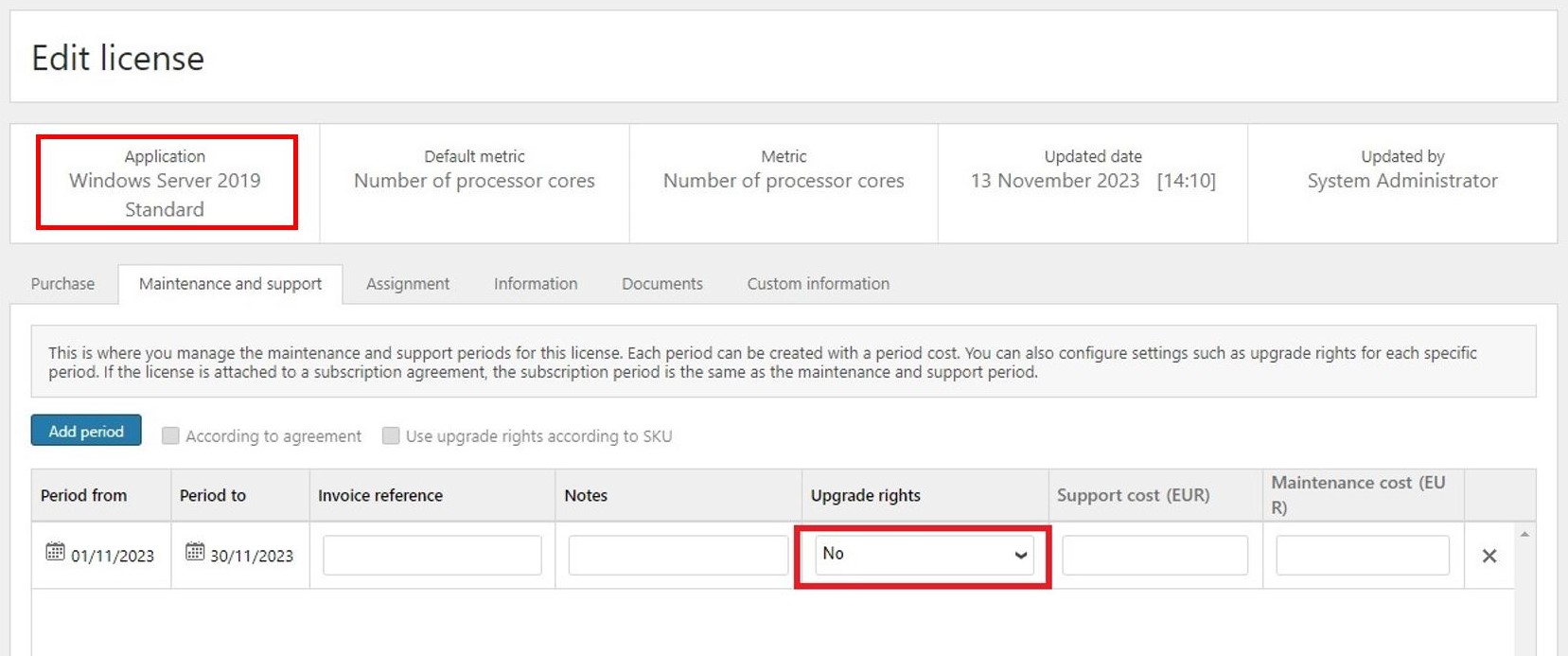
We now assign the required number of licenses to the VM and recalculate compliance. After the compliance calculation has completed, we see a warning that No eligible application is installed on the VM. Since the assigned license for Windows Server 2019 Standard has no upgrade rights, it is not possible to cover the installation of Windows Server 2022 Standard on the VM.
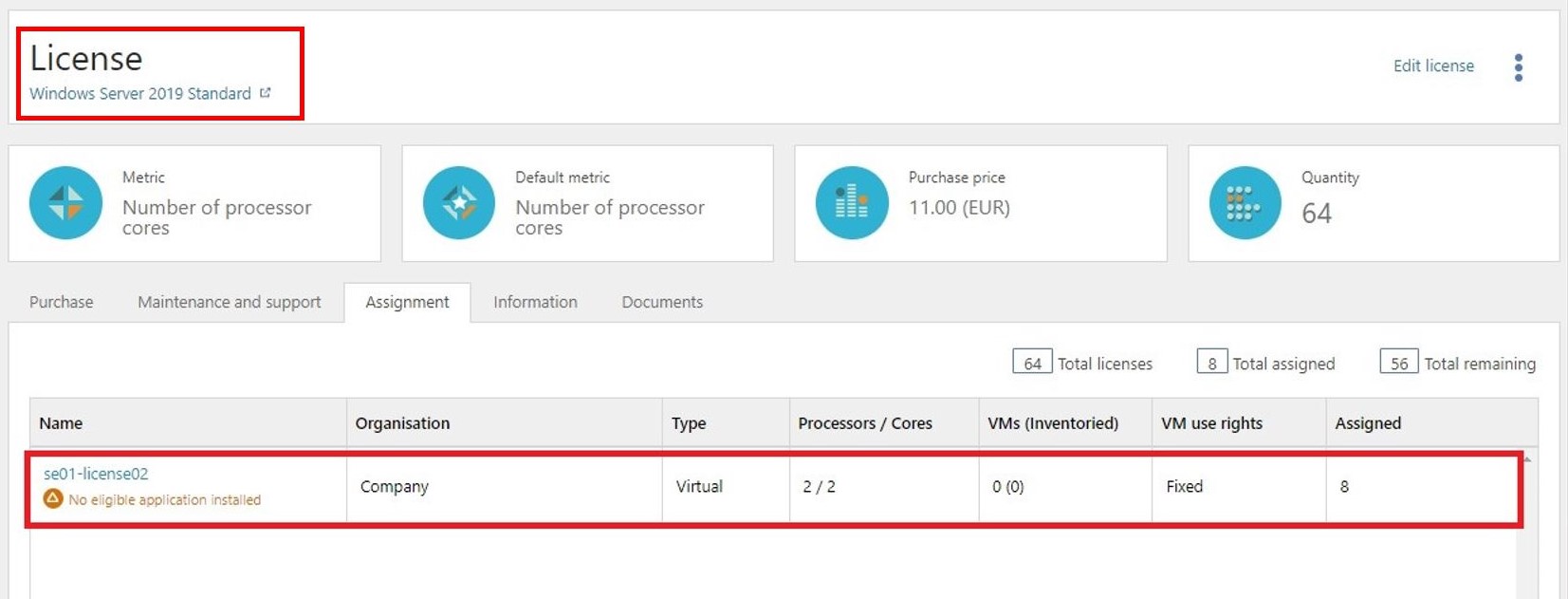
This is confirmed by looking at the Windows Server 2022 Standard application. We see that the host has a license requirement for the application since the VM has the entitlement state Licensed by host.

Microsoft Windows Server 2022 license, host not in datacenter
Scenario: We have a virtual machine (VM) that is running on a host computer which is not part of a datacenter. The VM is running Windows Server 2022 Standard. We then assign licenses to the VM with a quantity that fully covers the license requirement of the Windows Server 2022 Standard application. The licenses we use have an active maintenance period.
Looking at the host computer, we can confirm that the selected VM is running Windows Server 2022 Standard.
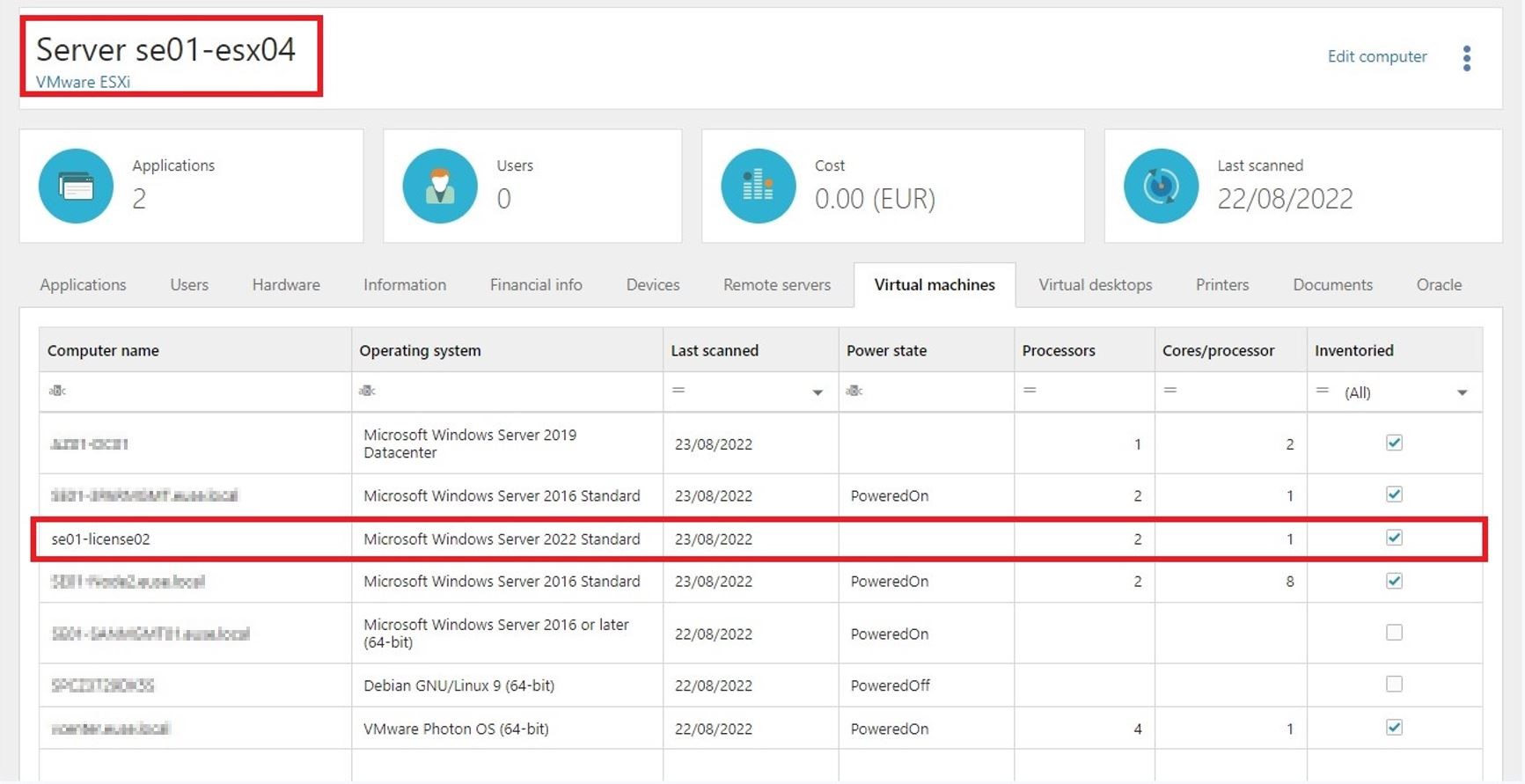
Looking at the Windows Server 2022 Standard application, we see that the host has a license requirement for the application since the VM has the entitlement state Licensed by host.
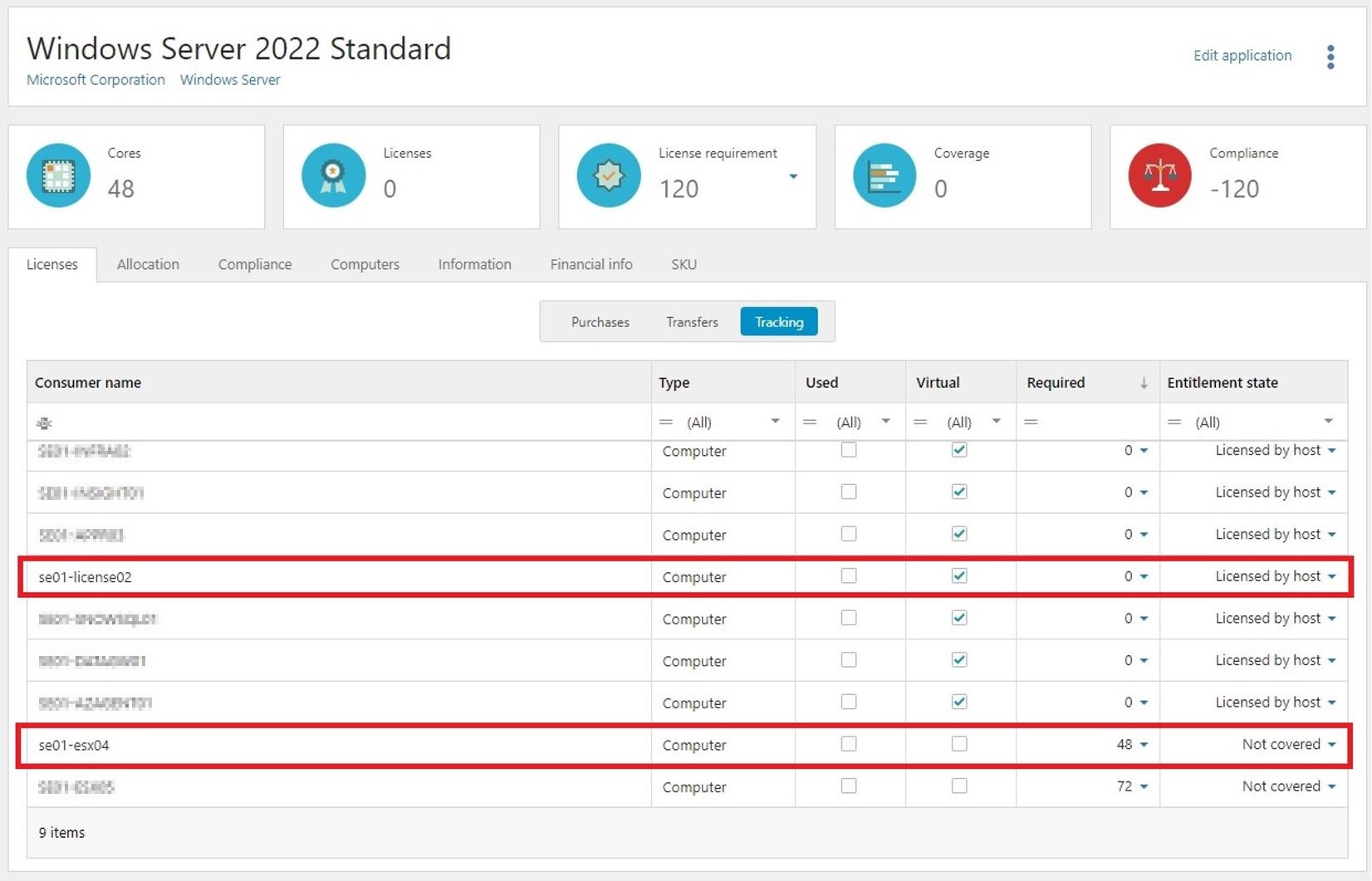
We now assign the required number of licenses for the Windows Server 2022 Standard application to the VM and recalculate compliance.
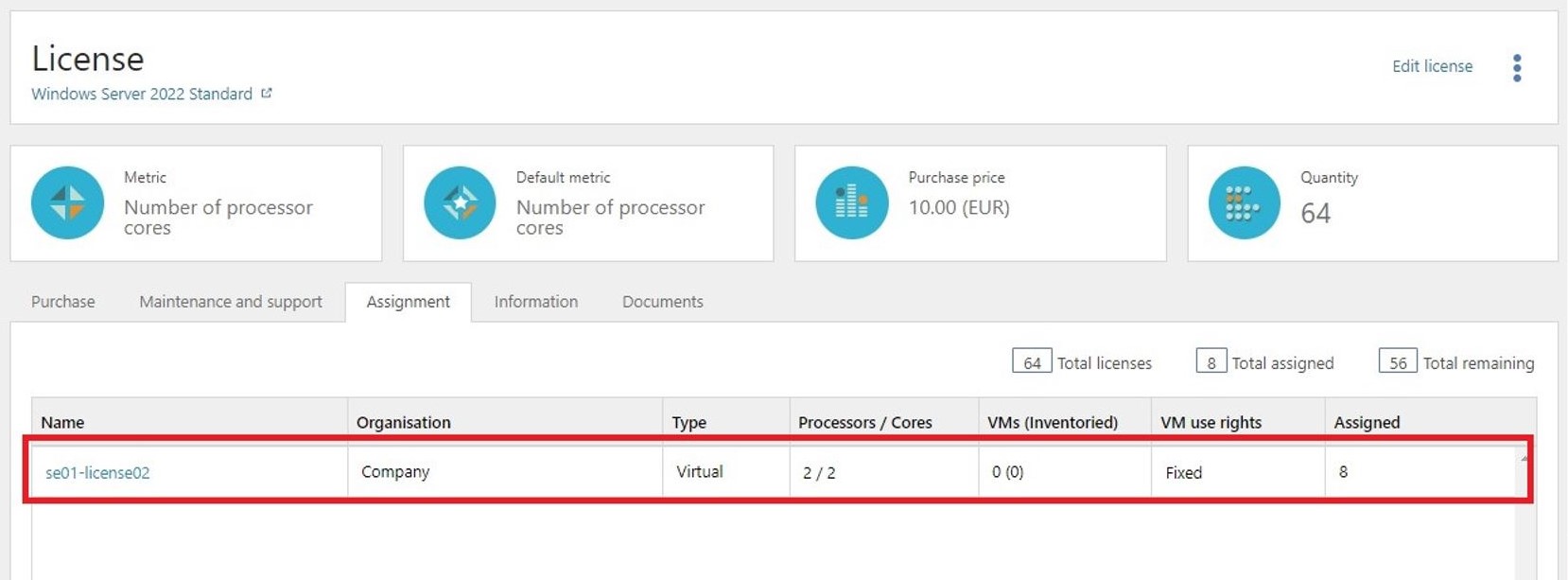
After the compliance calculation has completed, we see that the entitlement state of the VM has changed from Licensed by host to Covered, and that the host no longer has a license requirement for the Windows Server 2022 Standard application.

The license requirement for the host has now changed to Windows Server 2016 Standard.

Microsoft Windows Server 2022 license, host in datacenter
Scenario: We have two virtual machines (VMs) that are running on a host computer which is part of a datacenter. The two VMs are both running Windows Server 2022 Standard. We then assign licenses to the VMs with a quantity that fully covers the license requirements of the Windows Server 2022 Standard application. The licenses we use have an active maintenance period.
The datacenter has High availability configured and it has two host computers.
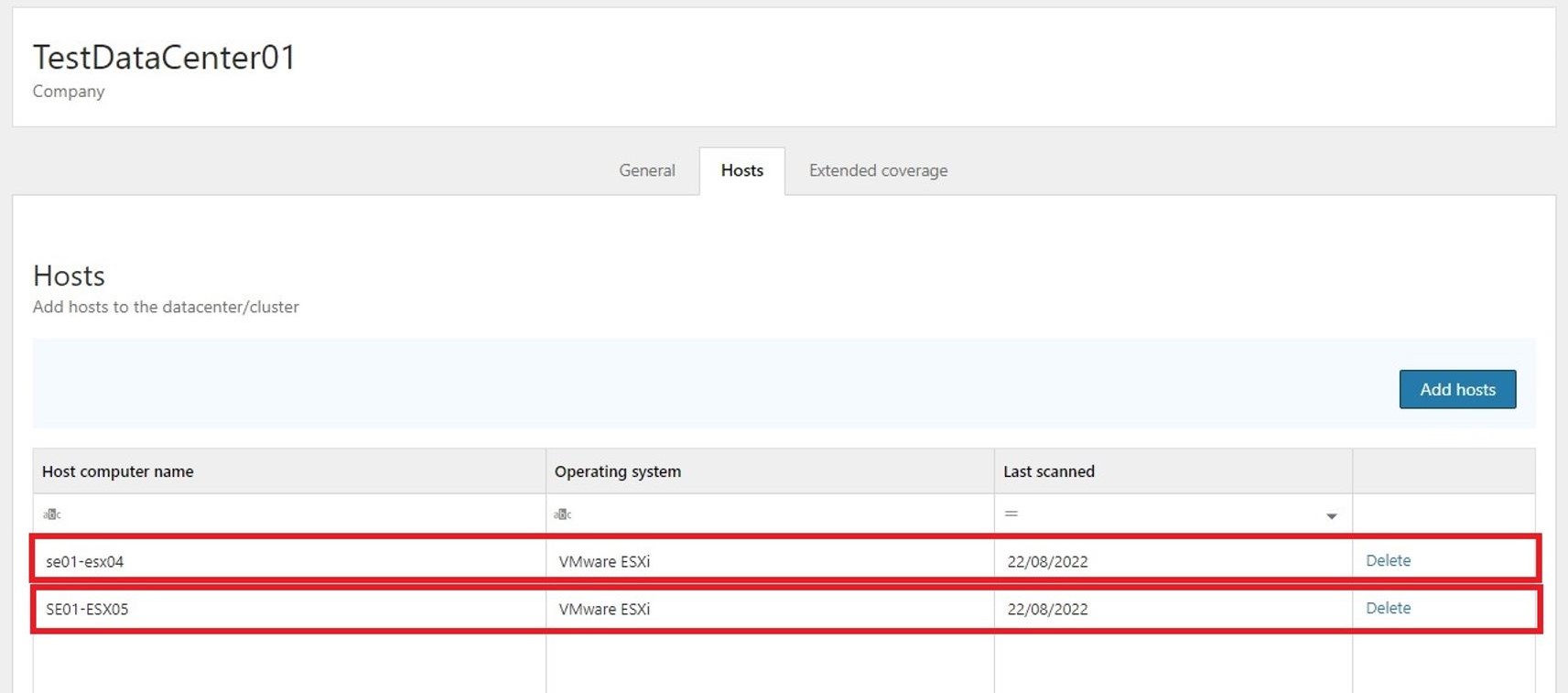
Looking at the first host, we can see that three of its VMs are running Windows Server applications and that the highest version is Windows Server 2016 Standard.

Looking at the second host, we can see that all of its VMs are running Windows Server applications and that the highest version is Windows Server 2022 Standard.

Looking at the Windows Server 2022 Standard application, we see that the VMs running the application have the entitlement state Licensed by host and that we consequently have a license requirement for both hosts in the datacenter.
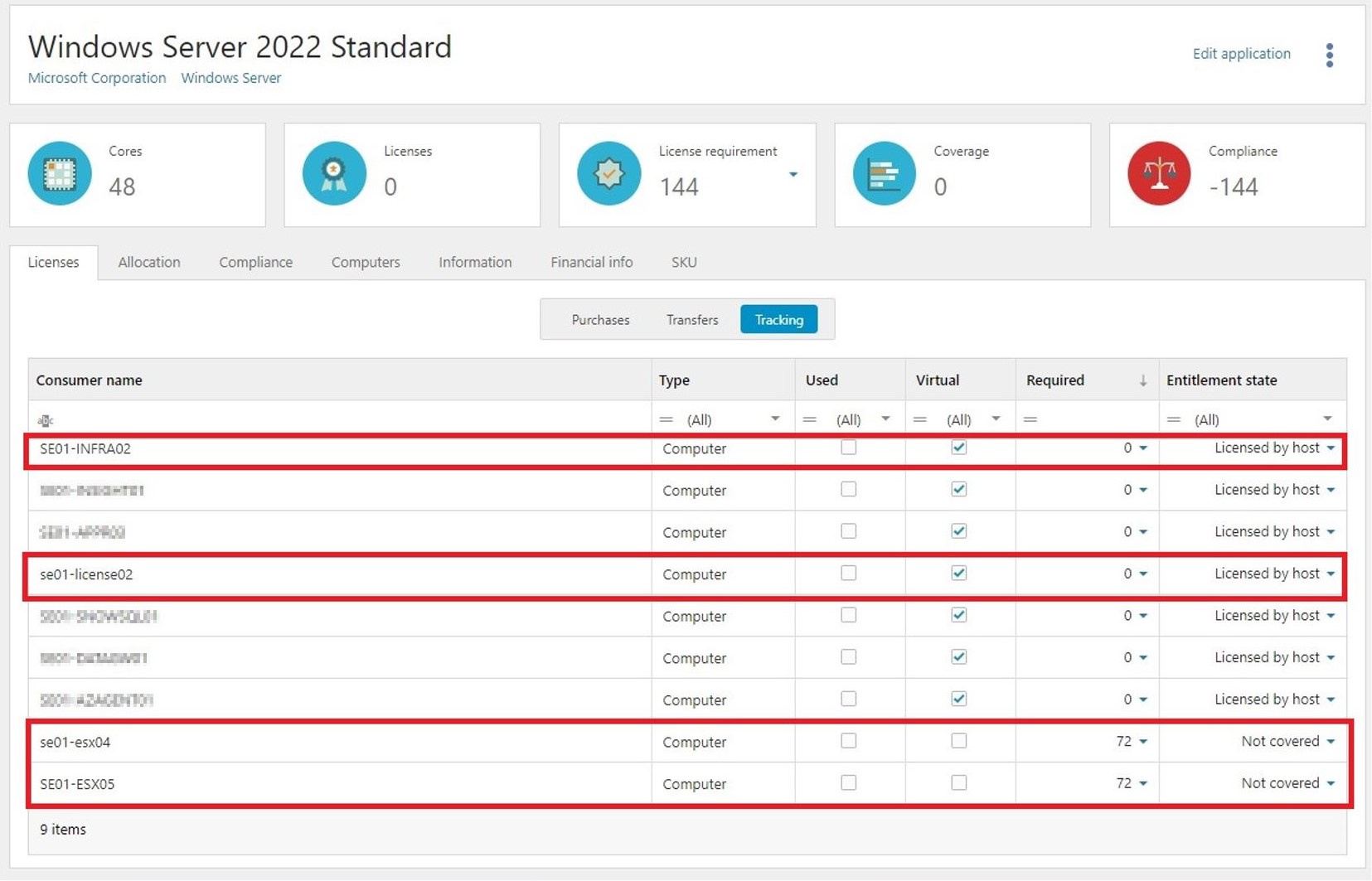
We now assign the required number of licenses to the VMs for the Windows Server 2022 Standard application and recalculate compliance.
After the compliance calculation has completed, we see that the entitlement state of the VMs has changed from Licensed by host to Covered, and that the hosts no longer have a license requirement for the Windows Server 2022 Standard application.
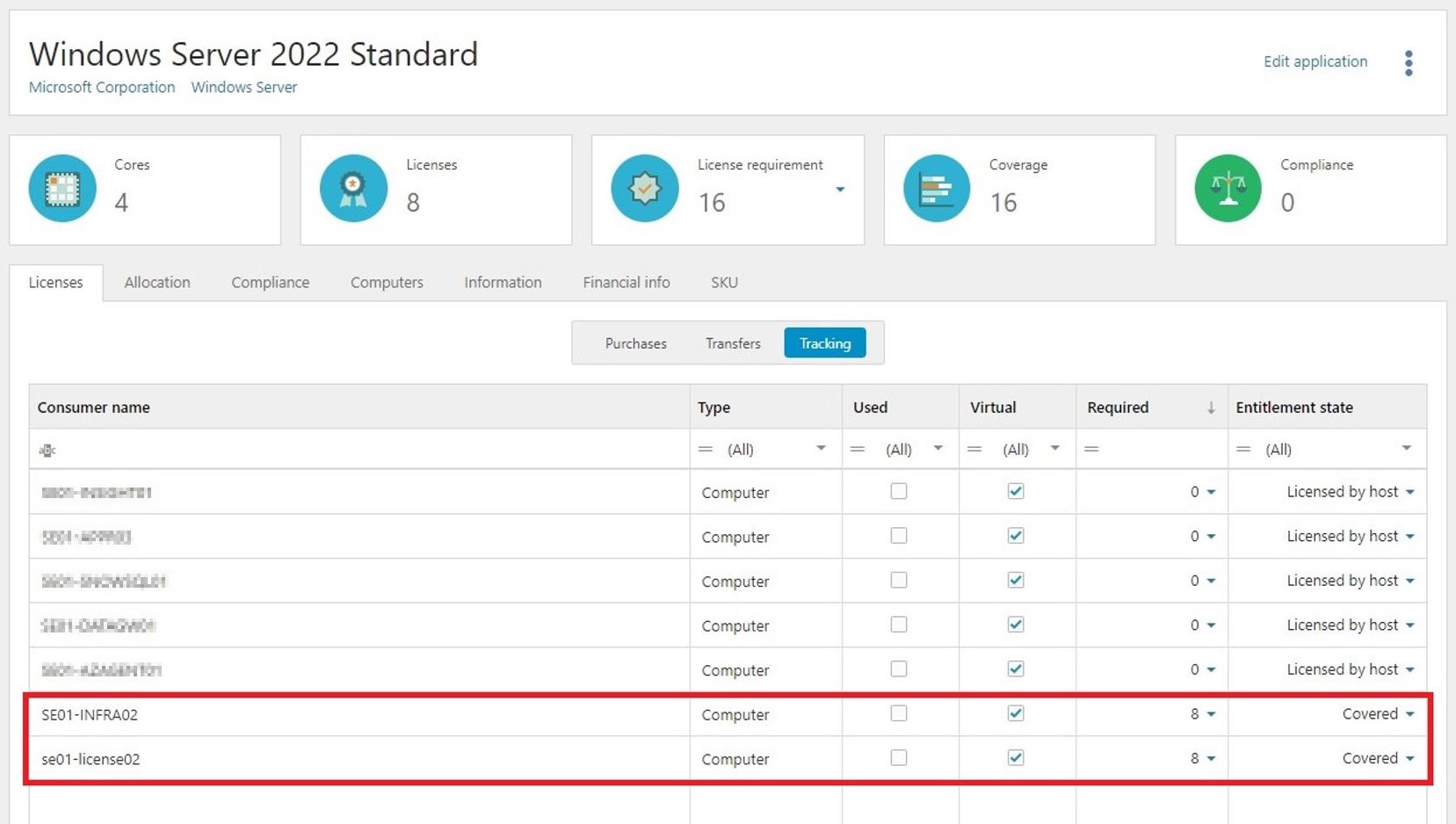
The license requirement for both hosts has now changed to Windows Server 2019 Standard.
